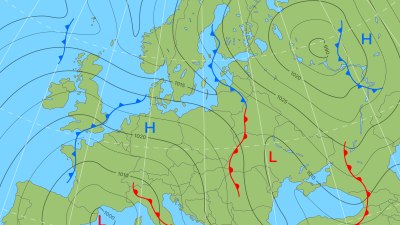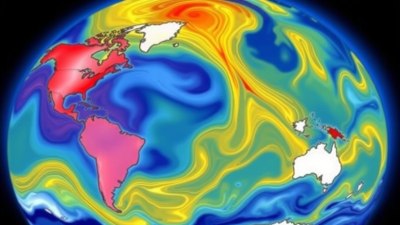Why the First Cold Breeze Can Feel Like a Breakup
Explore why the first cold breeze of autumn can evoke feelings similar to a breakup, blending emotional, psychological, and seasonal changes.

Image created with Flux Schnell
The arrival of the first cold breeze in autumn often brings with it a startling emotional experience. For many, this initial chill in the air can feel remarkably similar to the heartache of a breakup. But why does a shift in weather provoke such profound feelings? This article delves deep into the psychological, emotional, and physiological reasons behind this phenomenon, exploring how environmental changes influence our mood, memories, and even our relationships.
The Emotional Landscape of Seasonal Change
Seasonal changes have long been associated with shifts in mood and behavior. As the days grow shorter and the temperature drops, many individuals notice a decline in their emotional wellbeing. This transition can stir feelings of loneliness, nostalgia, and loss, closely mirroring the emotions commonly experienced during a breakup.
Psychologists suggest that these emotions stem from the body’s response to lessened sunlight and colder temperatures. The diminishing light affects the production of serotonin and melatonin, hormones that regulate mood and sleep patterns. This hormonal shift can bring on symptoms of sadness and lethargy, making the onset of autumn feel like an emotional upheaval resembling the turmoil of ending a meaningful relationship.
Associations and Memories Triggered by Temperature
When that first cold breeze touches the skin, it can act as a sensory trigger, evoking memories tied to past experiences. For some, autumn and its chill are linked to moments of solitude or periods of heartache. This conditioned association means that the cold breeze not only signals a change in weather but also a rekindling of stored emotional pain.
Furthermore, the sensory discomfort of coldness – the sharpness against the skin, the need to bundle up – metaphorically represents emotional vulnerability and the protective mechanisms people engage following a breakup. Just as one shields the body from cold, after heartbreak, individuals often shield their emotions to avoid further harm.
Loss of Warmth and Its Symbolism
Warmth is universally linked with comfort, security, and affection. The transition from summer’s warmth to autumn’s chill can symbolize a withdrawal of these comforting feelings, similar to the loss experienced in a breakup. The warmth of the sun can be seen as a stand-in for the presence and affection of a partner, and its absence creates a tangible sense of emptiness.
On a deeper level, this loss affects not just the body but also the psyche. The sudden absence of warmth highlights feelings of being emotionally exposed and alone, reinforcing the breakup metaphor. When the natural environment feels colder, the mind may subconsciously interpret this as a reflection of one’s internal state.
The Role of Social and Cultural Factors
Society and culture also play substantial roles in shaping how the first cold breeze is perceived. Autumn is often associated with decline and endings. Harvest festivals, the shedding of leaves, and the preparation for winter all culturally symbolize winding down and letting go. These themes can resonate deeply in personal lives, especially among those navigating relationship endings.
In many cultures, the arrival of cold weather is linked with introspection and retreat from social interactions. This retreat can intensify feelings of isolation following a breakup, as individuals find themselves spending more time alone and less with friends or partners. The cultural narrative around autumn as a time of stasis and self-reflection contributes to the emotional weight carried by that first cold breeze.
Physiological Effects of Cooler Temperatures
Beyond psychological and cultural reasons, the physiological effects of cooler temperatures influence mood and feelings. Cold weather causes blood vessels to constrict, reducing circulation near the skin, which can heighten feelings of chill and discomfort. This physical sensation of contraction and withdrawal can mirror the emotional withdrawal experienced during relationship loss.
Additionally, cold weather often results in reduced outdoor activity and social engagement. Limited physical movement and social interaction can reduce the release of endorphins, the body’s natural 'feel-good' chemicals, deepening the sense of sadness or loneliness. This biological downturn maintains the cycle wherein the first cold breeze can prompt feelings similar to heartbreak.
The Psychological Impact of Change and Uncertainty
Change itself is a fundamental source of psychological stress for many people. The first cold breeze signifies the end of summer’s familiarity and the arrival of a more uncertain season. This transition can invoke anxieties about what lies ahead, paralleling the uncertainty that follows a breakup.
Humans are wired to seek stability and predictability. When the environment shifts, it challenges one’s sense of control, triggering a fight-or-flight stress response. The emotional disruption caused by the weather transition can awaken dormant insecurities or heighten existing anxieties, compounding the sadness traditionally felt with a loss of intimacy.
Environmental Cues and Dopamine Regulation
The brain’s reward system also plays a crucial role in why the first cold breeze can feel like a breakup. Dopamine, a neurotransmitter linked with pleasure and motivation, fluctuates according to environmental inputs. During warm, sunny days, dopamine levels tend to be higher, fostering positivity and social engagement.
When the environment turns colder and darker, dopamine production can diminish. This reduction can lower motivation and increase apathy, often manifesting as a withdrawal from social interactions and an onset of melancholic mood states. Such neurological changes mimic the emotional withdrawal commonly seen during breakups.
The Social Impact of Seasonal Isolation
The cold season naturally limits outdoor gatherings and spontaneous social interactions. As people retreat indoors, the physical distance from social networks intensifies the sensation of loneliness, especially for those recently separated from partners. The absence of casual, warmth-filled social exchanges – such as outdoor dates or summer outings – can be deeply felt.
Furthermore, the societal rhythm often slows in colder months, with fewer events to engage in. This slow-down contrasts sharply with the busier social calendars of spring and summer, potentially increasing feelings of boredom, emptiness, and emotional pain after a breakup.
Memory Bias and Emotional Amplification
Memory bias can amplify the emotional impact of the first cold breeze. Humans tend to remember emotional events more vividly, particularly negative ones. The combination of sensory input from the cold wind and the gloomy autumn atmosphere can trigger flashbacks of difficult moments associated with past breakups or loneliness.
This selective recall can create a feedback loop where the environment repeatedly reinforces feelings of sadness and loss. Consequently, the initial chill feels not only physically uncomfortable but emotionally overwhelming, amplifying the breakup metaphor.
Link Between Temperature and Attachment Style
Attachment theory offers additional insight. Individuals with insecure attachment styles may be more sensitive to environmental cues like the first cold breeze. They may experience heightened anxiety and feelings of abandonment as the chill exacerbates pre-existing fears about loss or rejection.
For these people, the onset of cooler weather can be a significant emotional trigger, awakening dormant attachment wounds that were perhaps more manageable in the warmth and social engagement of summer. This increased vulnerability provides another layer of understanding to why the first cold breeze can evoke such painful feelings.
Coping Mechanisms and Their Effectiveness
Recognizing the reasons behind this emotional response allows for better coping strategies. Some individuals find solace in embracing self-care routines, such as warming baths, cozy blankets, or hot drinks, which symbolically restore warmth and security. Others may prioritize maintaining social connections despite seasonal challenges.
Physical exercise, even indoors, increases endorphin levels and helps counteract mood dips. Mindfulness practices can also reduce the impact of negative thought loops triggered by environmental changes. Understanding that the feelings elicited by the first cold breeze are temporary and rooted in both biology and psychology helps individuals manage their emotional health more effectively.
The Role of Nature and Mindset Shift
Adopting a mindset that welcomes autumn’s changes can transform the experience of the first cold breeze. Rather than viewing it as a sign of loss, one might see it as an opportunity for renewal and growth. Nature’s cycles remind us that endings often lead to new beginnings, supporting emotional resilience.
Engaging with the beauty of autumn – vibrant leaves, crisp air, and quiet days – can shift attention away from negative emotions that the cold breeze incites. This positive reframing encourages gratitude and acceptance, reducing the association between the cold and feelings of heartbreak.
Seasonal Affective Disorder and Its Connection
Seasonal Affective Disorder (SAD) is a recognized condition where individuals experience depressive symptoms in response to seasonal changes, particularly decreasing daylight and cold weather. The onset of the first cold breeze often coincides with the period SAD symptoms begin to surface.
For people with SAD, the emotional pain felt at the start of autumn is intensified and can mimic the grief and despair following a breakup. Treatments including light therapy, counseling, and medication can alleviate symptoms and help decouple the emotional experience from the environmental trigger.
How Relationships Influence Seasonal Mood
Interestingly, the presence or absence of relationships can modify how one experiences seasonal transitions. Being in a supportive partnership can buffer against seasonal mood drops by providing emotional warmth and social engagement.
Conversely, individuals newly out of relationships may feel autumn more acutely as it highlights the absence of physical and emotional closeness. The contrast between past warmth and current coldness can make the first cold breeze feel like a painful reminder of recent loss.
Modern Lifestyle and Environmental Disconnect
Modern lifestyles with climate-controlled environments reduce physical exposure to temperature changes but do not prevent the psychological impact of seasonal shifts. People still experience changes in daylight and outdoor conditions that affect mood, even if the chill is softened indoors.
Moreover, social media and technology can amplify feelings of isolation during these times by showcasing others engaging in warm, happy moments, thereby intensifying the sense of emotional coldness after a breakup. This environmental and digital disconnect contributes to the heightened sensitivity to the first cold breeze.
Seasonal Rituals and Emotional Healing
Cultivating seasonal rituals can ease the emotional impact of shifting weather. Practices such as lighting candles, preparing seasonal meals, or participating in autumn-themed activities help create a sense of comfort and continuity. These rituals counterbalance the feelings of loss and fragmentation brought on by the change in temperature.
Such traditions provide emotional anchors that can substitute for the warmth once provided by a partner, easing the sense of heartbreak and loneliness associated with the earlier cold breezes.
Historical Perspectives on Autumn and Emotional States
Throughout history, autumn has been symbolically connected to themes of melancholy and transition. Literature, art, and poetry frequently link the season with feelings of sadness and reflection, often depicting the falling leaves and colder winds as metaphors for mortality and lost love.
This cultural backdrop enriches contemporary emotional experiences, as collective memory and archetypes inform individual responses to the first cold breeze. Understanding these historical influences deepens appreciation for why the season—and its weather—touches us so profoundly.
Personal Stories and Shared Experience
Many people recount personal anecdotes of feeling unexpectedly raw and vulnerable the moment autumn’s first cold wind blows. These shared stories foster a sense of community and normalize the experience, highlighting that the emotional breakup-like sensation is common and understandable.
Connecting with others who feel similarly can reduce the stigma of seasonal sadness and promote healthier coping. Recognizing this as a valid emotional response encourages empathy and self-compassion during this time of year.
Integrating Nature Therapy into Emotional Recovery
Exposure to nature, even in colder months, has been shown to improve emotional wellbeing. Walking among trees and observing the changing landscape can ground individuals and help process feelings of loss.
Nature therapy encourages mindfulness and acceptance, helping to transform the painful association of the first cold breeze with breakup feelings into a moment of healing and renewal. These practices harness the calming influence of the natural world to ease emotional distress.
Awareness of how the first cold breeze can feel like a breakup allows individuals to prepare emotionally for the change. This preparation includes fostering supportive relationships, maintaining healthy habits, and acknowledging the seasonal impact on mood.
By approaching autumn with intention and understanding, the emotional power of the first cold breeze can be reframed from a painful reminder of loss into an opportunity for personal growth and emotional resilience.
In sum, the first cold breeze taps into a complex interplay of biology, psychology, culture, and environment. It awakens memories and emotions associated with loss and change, mimicking the profound impact of a breakup. However, through mindful awareness and proactive coping, the season’s onset can be a time to embrace transformation rather than mourn endings.











